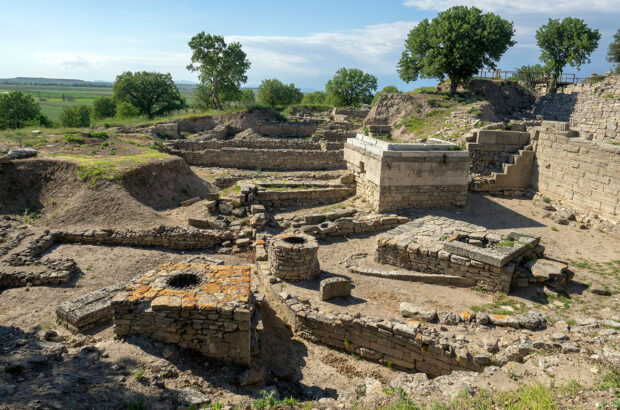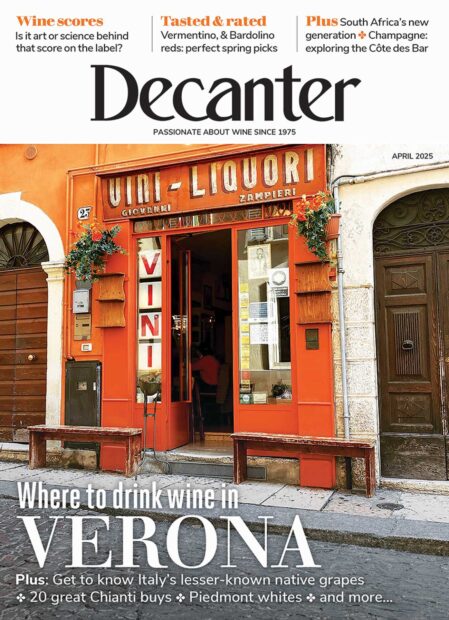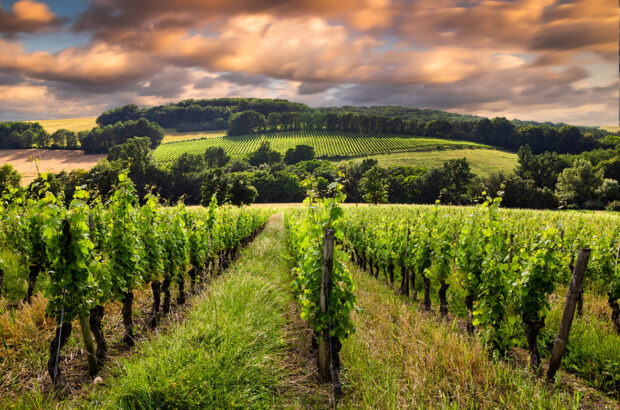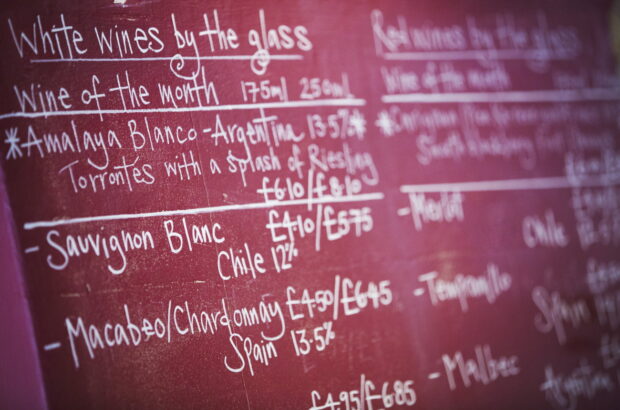The numbers speak for themselves: 1944, 1923, 1920 – these were the excellent supporting cast in a tasting of old single-vintage Cognacs that culminated in the undoubted star attraction: an astonishing 1885 spirit that had lain ageing in its barrel for more than 110 years.
Rare are the opportunities to taste such things, so the arrival of four small samples in plastic bottles ahead of an online ‘virtual tasting’ with David Baker, managing director of specialist importer Hermitage Cognacs, was a tantalising prospect indeed.
It’s customary to run through what was happening in the world when tasting truly historic vintages of anything – so here goes…
1944, obviously, in the dark depths of World War II: 6 June, the D-Day landings on the beaches of Normandy; the July bomb plot by a group of senior German army officers to assassinate Adolf Hitler failed; Paris liberated by the Allies on 25 August; operation Market Garden at Arnhem in September, around harvest time in the few vineyards still able to operate, was followed by the Battle of the Bulge from mid-December.
In 1923, King George V attended the opening of the old Wembley stadium in April; in July, Suzanne Lenglen of France beat Kitty McKane to win her fifth successive Wimbledon singles tennis title; and on 16 October the Disney Brothers Cartoon Studio was founded in Hollywood.
Three years previously, in 1920, the first flight from London to South Africa was completed in March, having taken a month and a half to complete; Scribner’s of New York published F Scott Fitzgerald’s first novel, This Side of Paradise; and in November, as Cognacs were being distilled, the (doomed) League of Nations held its first meeting in Geneva.
And 135 years ago – five or six generations past – 1885 saw the passing of Victor Hugo in Paris on 22 May aged 83; a few weeks later, on 17 June the Statue of Liberty arrived as a kit of 350 parts at Bedloe’s (now Liberty) Island, New York, a gift from the people of France to the US; and on 25 October, Johannes Brahms’ 4th symphony in E, his last, was premiered in Meiningen, Germany.
Taste of the past
What we can’t know is anything much about the specific histories of these four venerable Cognacs. What is clearly evident, though, is that the distillers and cellar masters who produced them were highly skilled, sufficiently so to select and craft spirits capable of resting in their oak barrels for several decades while still remaining full of vivacity, complexity, depth and mystery when put into bottles.
Hermitage Cognacs works with top Cognac houses to hunt out small parcels of such old spirits still preserved among the five or six hundred independent producers around the region, looking primarily for those with verifiable vintage dates or age statements that define how long they’ve spent in barrel.
Baker says he looks for ‘the other’ – spirits of distinctive flavour and individuality which are likely never to find a place in today’s commercial blends, and mainly from the superior-quality regions of Grande Champagne, Petite Champagne and Borderies.
The barrel ageing, and the conditions of the cellars in which it takes place, are the critical factors, Baker says: ‘It’s really what fine Cognacs are all about.’
He continues: ‘This ageing process develops [over many years] into what we call “rancio” – a kind of madeirisation, a richness and sweetness. I think this is highly sought-after: a natural richness, not a sugary sweetness.’
Baker is also owner of Brandyclassics, the online source of a wide array of high-quality single-estate, vintage and age-statement Cognacs, Armagnacs and other spirits, including the four tasted here (see below), all ideal for special birthdays, anniversaries or corporate gifting.
The prices of the 1944, 1923, 1920 and 1885 Hermitage Cognac bottlings are, for obvious reasons, not cheap. But these are really individual pieces of history that can never be replicated.
Collectors’ items, yes they certainly can be (though you may have to wait some time to recoup the full retail price); but it would be a shame for people to leave these bottles sealed and not experience the extraordinary, effusive flavours and highly individual character of these rare old distilled spirits.
As Baker himself said, it was ‘a rather special tasting’, launching one Cognac, the 1885, which ‘is frankly unbelievable, it’s so good’…
1944
Harvested and distilled in this year (during the war). Believed to be from the southeast of the Grande Champagne region around Bouteville, on gentle chalky slopes with relatively poor soil, and aged in barrel for more than 50 years. Alc 42.3% RRP £876 Brandyclassics (only 70 bottles available)
The colour in the glass is a reddish gold with hints of tanned leather Spicy cinnamon to the fore on the nose, but it has lots of rich plummy fruit, dried fruits and tropical/molasses notes in support. It explodes onto the palate – packed with fruit, extra portions of dried orange peel pervade, then darker characters of fig and spiced walnuts/rancio maturity emerge through the back-palate and into a very lengthy finish. It’s plush and rounded, full of character and nicely balanced between the fresher fruit and its darker side.
1923
From near Lignières in the southeast of the Grande Champagne region, source of many of the finest Cognacs. The soil is rich in very porous chalk, so the Ugni Blanc vines have to root far down to reach the water margins. Aged in old, damp cellars for more than 60 years in barrel. Alc 43% RRP £964 (only about 65 bottles available)
The colour is described by David Baker as ‘a kind of grey-gold’, reflecting a naturally aged appearance. On the nose it’s quite savoury, pithy and nutty with a slightly peppery spice, dried orange-peel and marzipan with roasted pineapple notes, sloes and rancio. The palate does not disappoint, possessing a distinctly apricot richness with warming alcohol enveloping the tongue. It’s big and beautifully structured, with all the fruit and fire backed by a smoky complexity and creamy-caramel roundness. It’s really irresistible.
1920
From the prime chalky slopes of the Grande Champagne region, using some Folle Blanche fruit as well as the Ugni Blanc, and probably distilled on a traditional wood-burning still with the distiller sleeping in the distillery to supervise its production. Ageing would have been in oak casks for more than 70 years in an old, earth-floored cellar. Alc 43.5% RRP £1,085 (70 bottles available)
The colour is a deep burnt gold with more than a hint of iodine about it, clinging to the glass. There’s a distinctively complex, subtle and deep range of aromas here, with prominent cedar and turmeric spices filling out the evident rancio traits, but complimented by all sorts of ripe tropical and figgy characters, orange peel, ripe plums, baked banana and darker liquorice notes. The palate is, in short, simply delicious: smooth, not fiery at all, full and very generous. Though woody spice is central, it is completely balanced by layers of red fruits, figs, macadamia nuts, coffee bean along with softer, sweeter spices on the mid-palate, finishing juicy and moreish with roasted pineapple, toasty preserved dark fruits and a hint of liquorice. At 100 years of age, this Cognac offers depth, complexity and intrigue to entice you back for more.
1885
Really, all that needs to be known of this Cognac is that it was aged for more than 110 years in the cask, and yet was still bottled at its natural cask-strength of 46% alcohol – true testament to the skills of the cellar master who sourced and made it. From the southeast of the region we now know as Grande Champagne, around Bouteville, source of many of the finest Cognacs. Alc 46% RRP £4,981 (about 200 bottles originally available)
It’s staggering to get an opportunity even to taste a spirit of this pedigree and age. It’s perhaps best summed up by Hermitage Cognacs MD David Baker himself, who was visibly energised as he related: ‘The first thing I did when I got a sample of this was to think: gosh, that’s dark! But this is a 110-year-old Cognac – it’s so rare, it is really quite exceptional: it’s a collector Cognac. The balance is so good on it – I very rarely ever taste a Cognac of this quality.’
Exhibiting what Baker christened a ‘second-stage rancio’, this 1885 Cognac has a huge depth to it that begins on the nose, which in stately, unhurried fashion reveals a leathery-smoky richness with dark molasses notes, toasted nuts and baked cherry pastry sweetness with a grating of very dark chocolate. All of this is replicated on the palate, which erupts with huge vitality and vigour that make a mockery of this distinguished spirit’s tremendous age – and also explain its longevity! There is complexity and nuance in abundance, in turn revealing those molasses, nuts and figs, but also fragrant spices and sandalwood, baked damsons and black cherries, tobacco leaf, even notes of truffle and black treacle, though right at the end, through all the rancio and dark flavours, there is a little uplift of baked apple and pear skin. The smokiness and dark spice linger long as a reminder on the after-palate.
David Baker noted, frankly, that ‘nothing better than this may ever be found’ in Cognac. If you were lucky enough to have a bottle in your possession, his unarguable advice was: ‘Guard it with your life!’







